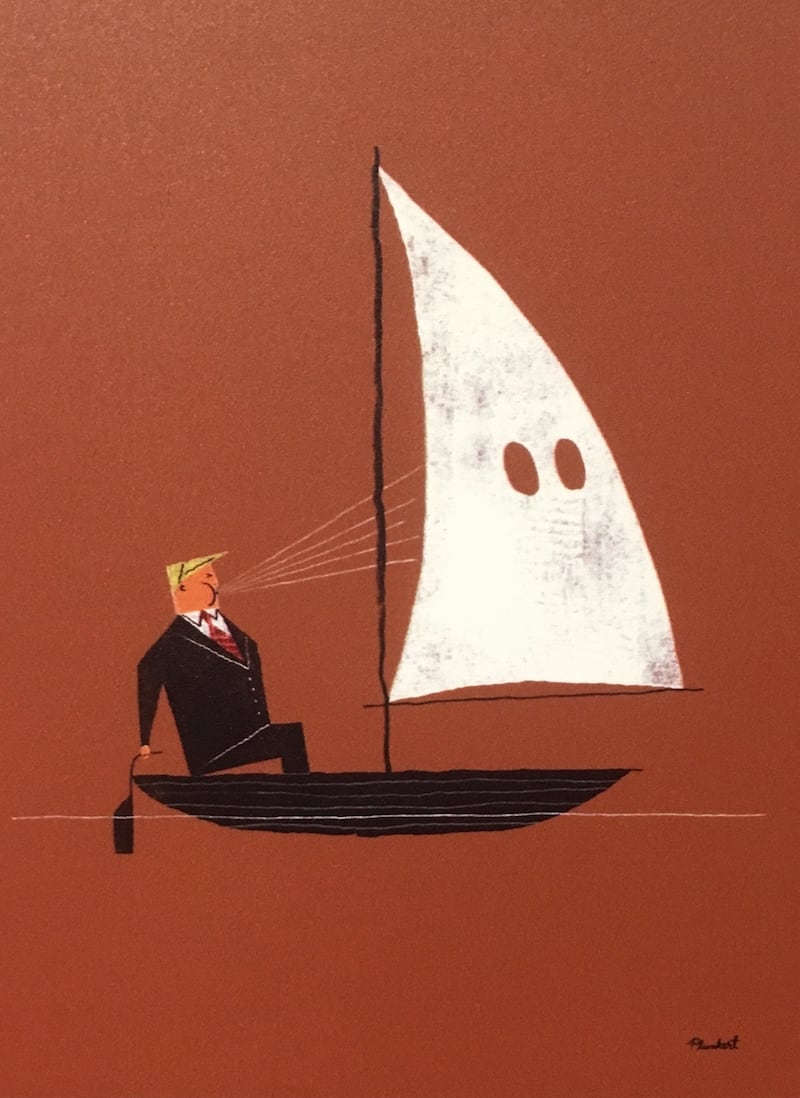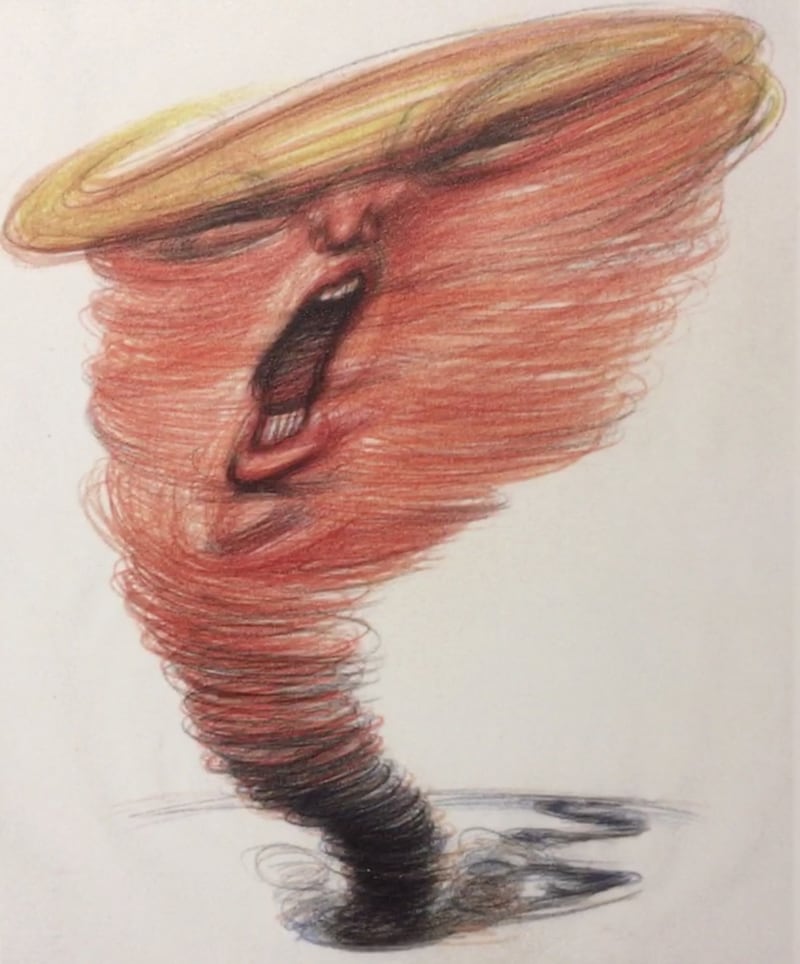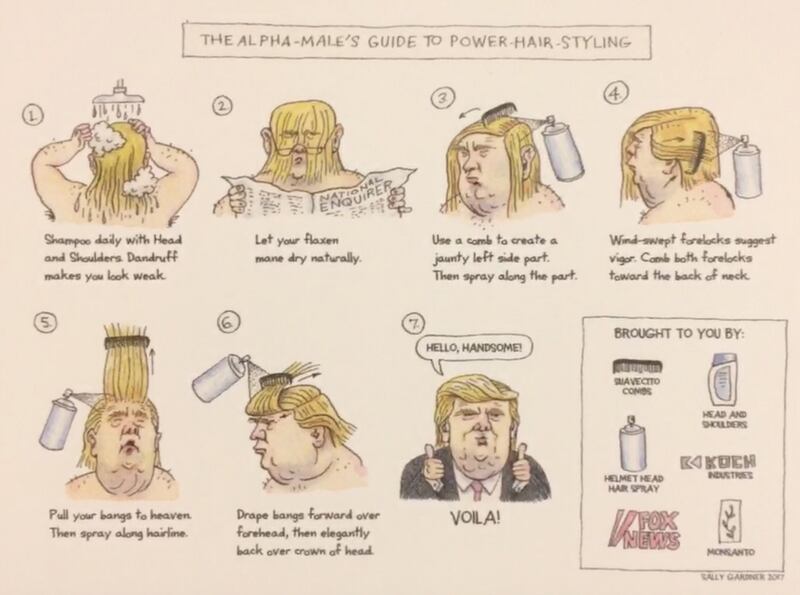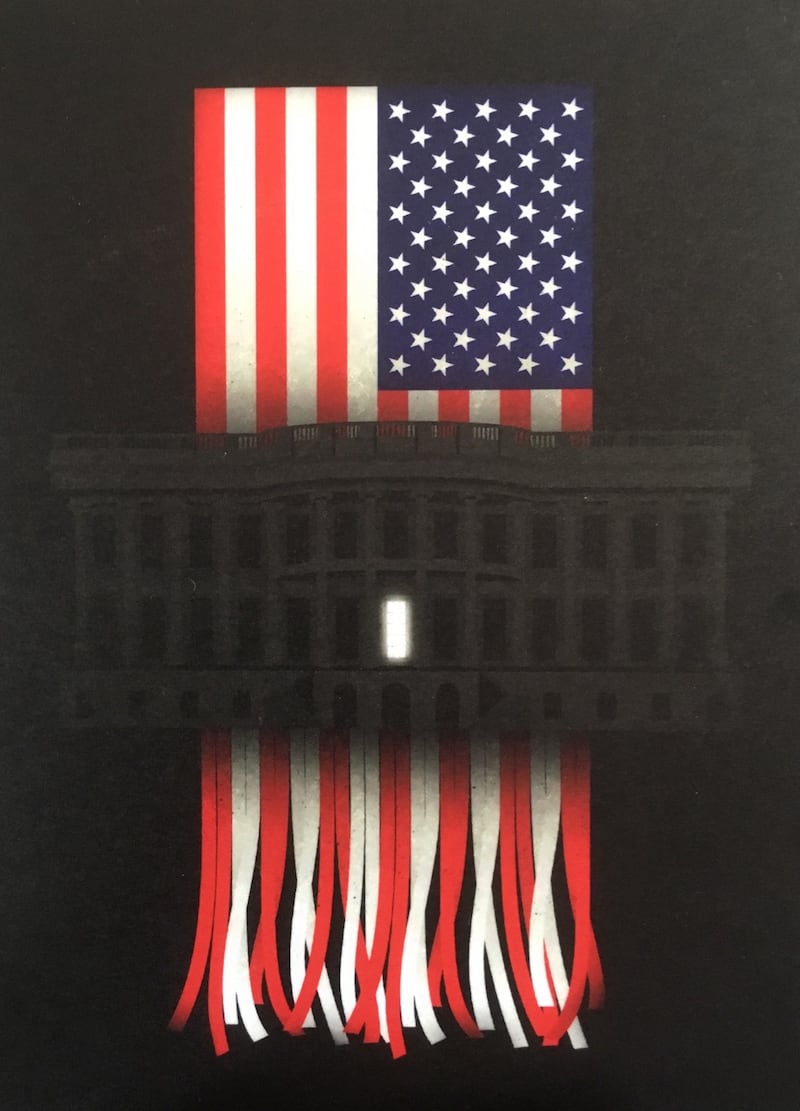At times when politics becomes surreal – and they are by no means rare times – words fail us and we need cartoons or other forms of satire to give expression to the absurdity of it all. With Donald J Trump in the White House, now is one such time. It has spawned a rich crop of cartoons, some of which will likely survive as classics of the quirky craft of the cartoonist.
The work of American cartoonists on Trump and related matters – gun control, immigration, climate change, #MeToo – is celebrated in a superb exhibition of political graphics in the period 2016-2018 at the Chelsea Gallery of the School of Visual Arts in New York City. Featuring 200-plus images by 53 artists, most of the images first appeared in newsprint or online. In the words of one of the exhibition's curators, Francis Di Tommaso, they "bear witness to the political and social upheaval that has beset [the United States] in these last two years".
Satire, whether in cartoons or in literary form, is generally regarded as something that “punches up” – in other words, a weapon of the powerless against dominant groups and people. Even in ancient times, Aristotle defined wit as “educated insolence [pepaidumene hubris]”. Many feel it is insensitive to use it against the powerless – most particularly, against vulnerable minorities such as Muslims or a black female tennis player, to cite but two instances of cartooning that caused controversy in the recent past. No such considerations arise in relation to Trump. As a plutocrat in the American “robber baron” tradition of business titans and as an authoritarian and arrogant politician, he is fair game for the cartoonist.
Among the artists whose work was included in the exhibition is Rob Rogers, who was sacked after 25 years as the editorial cartoonist on the Pittsburgh Post-Gazette because his cartoons were regarded by his employers as targeting Trump disproportionately and as too critical of him. This is regrettable self-censorship by a significant daily newspaper in the face of relentless bullying of the press by Trump. Rogers' cartoons are gently whimsical, and perhaps all the more effective as instruments of ridicule because of that. A typical one on display in this exhibition has Trump perched on the branch of a tree tweeting away furiously, as is his wont, while a flock of blue birds – the distinctive Twitter logo – are, woodpecker-like, chipping away at the trunk of the tree and the tree is about to topple as a result.

A more vicious image – by David Plunkert – has Trump guiding the ship of state forward by blowing into a white sail in the shape of the Ku Klux Klan's conical headdress with eyeholes. Likewise, the frenetic chaos of the Trump presidency – as documented by, among others, Bob Woodward in his latest book, Fear – is well captured in a caricature of Trump as an angry tornado by Victor Juhasz.

Another very effective exhibit – a strip cartoon, by Sally Gardner – mocks Trump's extraordinary hair concoction. "Power hair styling", she calls it. It is a good example of how cartoonists often exaggerate a particular unflattering characteristic of their victim as a means of exposing more general shortcomings.

For me, the most evocative image in the exhibition is by Brian Stauffer. Drawing a parallel with Banksy's infamous shredding of his painting "Girl with balloon", it shows the American flag being shredded through a White House in complete darkness except for one window; the President is presumably behind the lighted window masterminding the operation.

This exhibition is self-consciously a call to action to defeat Trump and his associates. It is "art ... engaging 'the troops'", to quote Di Tommaso's co-curator, Steve Brodner. He adds: "It is bolstering the courage needed to fight the armies of ignorance, greed and hate." Di Tommaso himself writes that the images gathered in this exhibition can "appeal, through their eyes, to viewers' consciences, to their sense of civic duty. They can prompt – better yet, incite – in them the will ... to do something." We can only hope that he is right.
Felix M Larkin is the author of Terror and Discord: the Shemus Cartoons in the Freeman's Journal, 1920-1924 (A&A Farmar, 2009)











